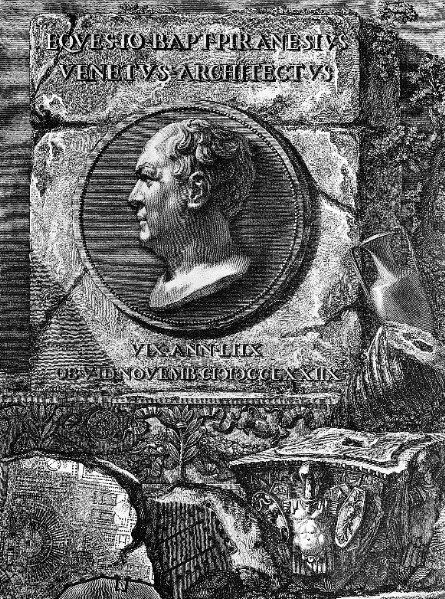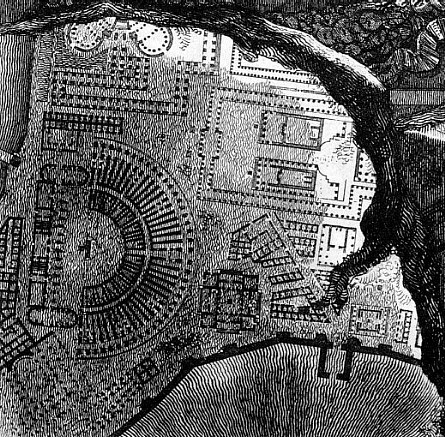axes of life and death
1997.12.28
...the Roman cardo and decumanus... ... wonder whether the life and death axes of the Campo Marzio are also a reenactment of the ancient town planning axes. Upon inspection of the Ichnographia, the life and death axes are just a few degrees shy of corresponding with the cardinal points. Moreover, the cardo, the north-south axis corresponds to the axis of death in the Ichnographia, and traditionally "refers to the axis around which the universe rotates." The Campo Marzio axis of life, the east-west axis, the decumanus, refers to the rising and setting of the sun.
...the Arch of Theodosius et al is placed at the tip of the axis of death. In its smallness (and apparent insignificance) it reminds of the tiny unnamed intercourse building at the tip of the axis of life. What is of utmost significance, however, is that this particular Triumphal Arch is indeed one of the very latest building additions rendered within the Ichnographia, and dates from anywhere between AD 367-395.
The placement of this arch at the tip of the axis of death is symbolic in that it represents the very end--Theodosius was the last Emperor to rule over both the East and West Empire, and it was he who instituted Christianity as the state religion--the end of the pagan empire and the end of any semblance of a totally unified empire. Thus, the intercourse building at the tip of the axis of life represents the very beginning (of life and quite possibly of the Ichnographia's plan formations, as well) and the Arch of Theodosius et al at the tip of the axis of death represents not only Rome's end as the sole capital of the civilized world, but also its end as capital of the pagan world.
It is through his plan of the city of Rome that Piranesi writes (and/or rights) the history of Rome itself. Through the Ichnographia Piranesi reenacts the history of the city.
...the Ichnographia represents Rome at its pagan zenith...
| |
the portrait of Piranesi
1998.06.28
There is a portrait of Piranesi engraved by his son Francesco. The portrait is a profile set in a medalion, and the overall composition of the plate is in the Piranesi style. In the lower left corner, there is a stone fragment carved with plans, and it is indeed a fragment of the Ichnographia, specifically the Theater of Marcellus, the Minutia Vetus, and the Porticus Octavae. ...wonder if Francesco, or even Piranesi himself, saw the Ichnographia as Piranesi's greatest achievement. The four-sided Temple of Janus is also clearly delineated on the fragment.
...a case for the father-son theme that begins with Mars and Romulus (inversely God, the Father and His Son Jesus), and could include Augustus and Agrippa, and Trajan and Hadrian, and even Theodosius and Honorius.


|